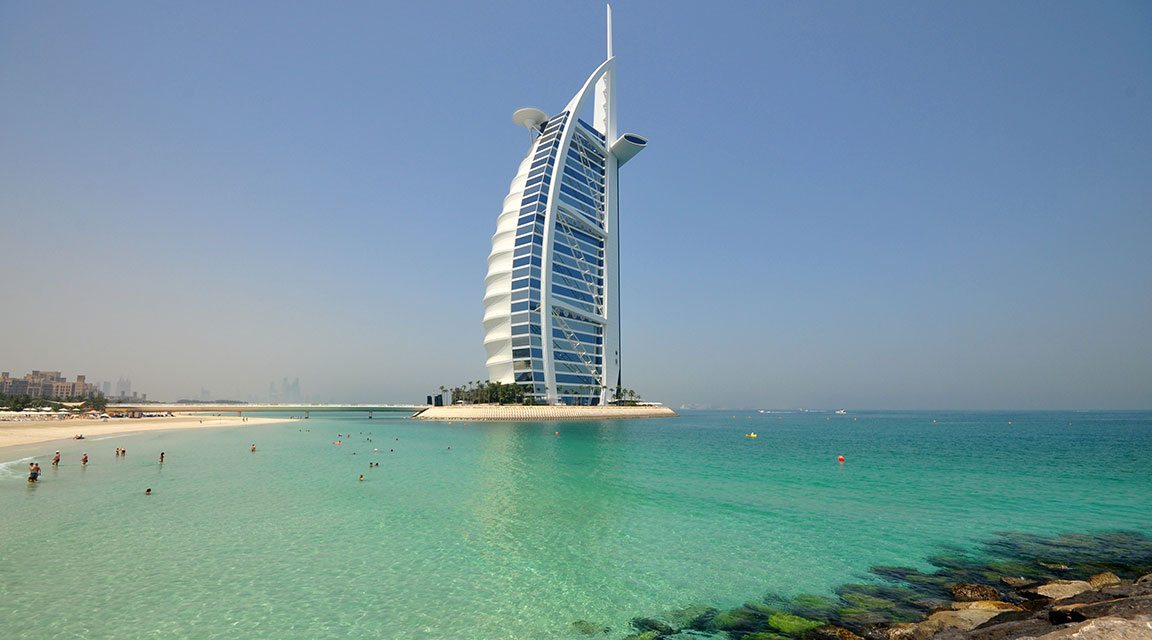

The hotel required 1,790 square feet of 24-carat gold leaf for its interior, and is billed as the worlds first seven-star hotel
The opening of Burj al-Arab in 1999 propelled Dubai onto the world stage. Billed by its owners as the worlds first seven-star hotel, it sits on an artificial island 280 metres offshore.
From conception, the hotel was planned to be a luxury property that would attract attention from around the world.
Burj al-Arab was designed by architect Tom Wright of the UKs WS Atkins in 1993, and was constructed to look like a dhow sail.
One of its features is an underwater aquarium restaurant that can be reached through a simulated submarine voyage.
The main contractor was the local/South African Al-Habtoor Murray & Roberts. Construction of the island began in 1994 and was completed in 1997, at which point work started on the hotel. Burj al-Arab is estimated to have cost $1bn in total to build.
The tower is 321 metres high and accommodates 202 rooms. At the time of opening, Burj al-Arab was the tallest hotel in the world, and it remains the tallest all-duplex suite hotel today. The construction required 70,000 cubic metres of concrete, 9,000 tonnes of steel and 1,790 square feet of 24-carat gold leaf for the interior.
In 2016, the island was extended by 328 feet into the Gulf to create a bigger outdoor space; it was called the North Deck.
You might also like...

TotalEnergies to acquire remaining 50% SapuraOMV stake
26 April 2024

Hyundai E&C breaks ground on Jafurah gas project
26 April 2024

Abu Dhabi signs air taxi deals
26 April 2024

Spanish developer to invest in Saudi housing
26 April 2024
A MEED Subscription...
Subscribe or upgrade your current MEED.com package to support your strategic planning with the MENA region’s best source of business information. Proceed to our online shop below to find out more about the features in each package.




